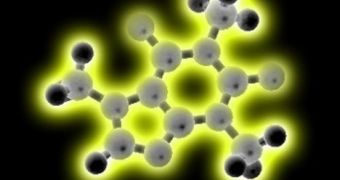A system designed to signal the presence of chemicals such as pathogens, explosives, disease-related biomarkers or toxins through a visual glow has been developed by researchers at the Massachusetts Institute of Technology (MIT), in Cambridge.
The instrument has a variety of applications in numerous fields of research, including medicine, national security, advanced imaging technologies, disaster relief and much more. When it finds the particular chemical it was tuned to discover, it emits a fluorescent glow.
At the basis of the system are special fluorescent molecules, arranged on a metal-organic framework (MOF). This is a scaffolding of sorts, which leaves ample empty room inside itself for target molecules to gather.
This automatically increases their chances of becoming attached to the fluorescent molecules that glow when they sense the presence of the foreign agents. Full details of how the system functions are published in the November online issue of the Journal of the American Chemical Society (JACS).
The work was authored by MIT assistant professor of chemistry Mircea Dincă, postdoctoral researcher Natalia Shustova and undergraduate student Brian McCarthy. Their study will also appear in an upcoming print issue of the journal.
“A lot of known sensors work in reverse. Turn-on sensors are better, [because] they’re easier to detect, the contrast is better,” Dincă explains. Turn-off sensors detect a chemical when a certain process going on inside them is disrupted.
Turn-on sensors are different through the fact that a process is initiated when a certain chemical attaches to them. In this particular case, that active process is fluorescence. The MOF on which the device is based belongs to a class of materials that was first found only 15 years ago.
“Present materials generally function via luminescence quenching, [therefore] suffer from reduced detection sensitivity and selectivity. Turn-on detection would address these limitations and be a considerable advance,” says Mark Allendorf.
The expert holds an appointment as a research scientist with the US Department of Energy's (DOE) Sandia National Laboratory (SNL), but was not a part of the new MIT investigation.
Funding for the research came from the MIT Center for Excitonics. The organization is an Energy Frontier Research Center that is funded by the DOE and the US National Science Foundation (NSF).

 14 DAY TRIAL //
14 DAY TRIAL //